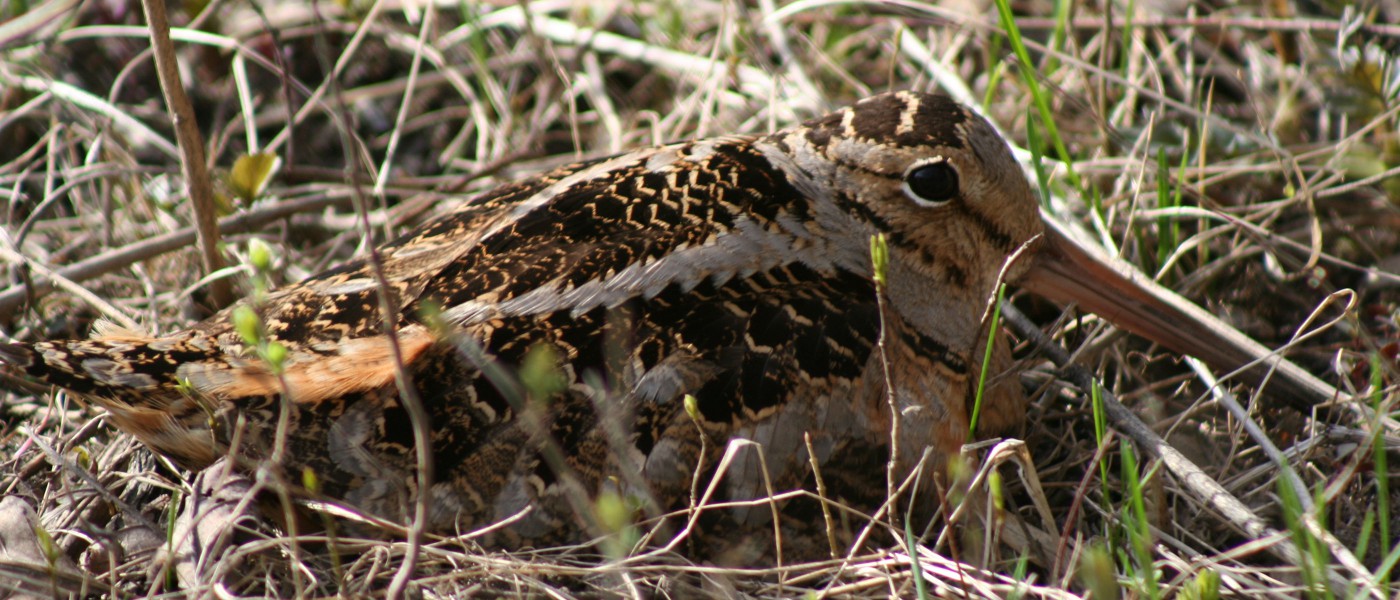Birds of Brooklyn: American Woodcock
Seeing an American woodcock perform its mating dance is a rare treat. After scouting many places over the years, I have found the perfect viewing spot—an old farm field in Long Island. I went there in early March this year, slightly before sunset, filled with anticipation about the performance I was about to see and hear. Precisely at sunset, I heard the first nasal beezp, and I knew that woodcocks were present and that the aerial display was about to begin.
At 15 minutes past sunset, while there was still enough light to see, the first woodcock took off. He (only males perform) flew in large circles, each pass tighter and higher until he reached about 100 feet high. Then he stopped circling and began fluttering his wings, remaining almost stationary in the sky. The fluttering sound created by the bird’s wings is very distinct. After about 20 seconds, the woodcock began a gentle descent, like a leaf falling from the sky. His performance over, the woodcock now strutted around on the ground, proud of a job well done. I watched three more males repeat the display until it was too dark to see. It reminded me of the elaborate mating performances that birds of paradise perform in Papua New Guinea. Here in the U.S., there are few mating displays that top that of the woodcock.
Woodcocks are among the earliest migrants to pass through the NYC area. They can be found in Prospect Park, Central Park, and occasionally Brooklyn Botanic Garden. You’ll stand the best chance of catching a mating ritual in action by going to Jamaica Bay National Wildlife Refuge. Mating flights take place there nightly, just south of the parking lot. The males perform these displays well into spring, after mating, and even after the females have laid their eggs and nesting is almost complete.
In addition to their fascinating mating ritual, woodcocks are also known for their strange appearance. They are sometimes called “big-eyes” (as well as “timberdoodle”), for their long, narrow beak and the very unusual placement of their eyes, which are so far widely placed on their heads that they sometimes fail to see buildings and other structures straight ahead and collide with them. Unfortunately, finding an injured bird on the street is often how people meet their first woodcock in the city.
More: Read about the Blackburnian warbler, a brightly-colored tropical bird on its way to Brooklyn for the summer.
Woodcocks were much more numerous when farm fields were ubiquitous, but they are still fairly common in the eastern U.S. They are very beneficial birds, consuming grasshoppers and other pests. Finding a woodcock during a daytime bird walk is a real challenge since the bird remains stationary in daylight, blending in easily among the leaves where it likes to forage for earthworms. Evening presents the best opportunity to see a woodcock. This is when it announces its presence for everyone to see.
The Birds of Brooklyn series looks at some of the most familiar and fascinating birds that call Kings County their habitat.


